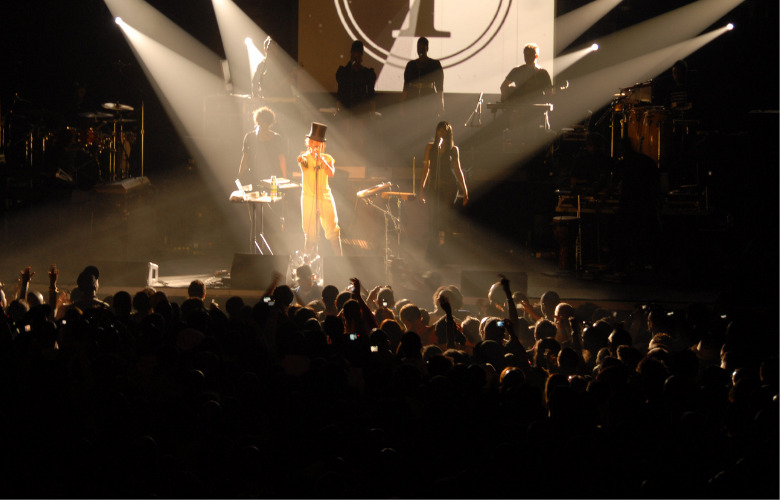
In the course of Black History Month 2021, we are working together with Roadies Of Color United (R. O. C. U.) and we want to introduce you to a number of fabulous entertainment industry professionals. Today’s spotlight is on Martin Thomas, Lighting Designer and Lighting Director. He shares with us his thoughts on working in the entertainment industry.
I’ve been a lighting designer for twenty-five years. But I’ve been in the industry for more than forty years.
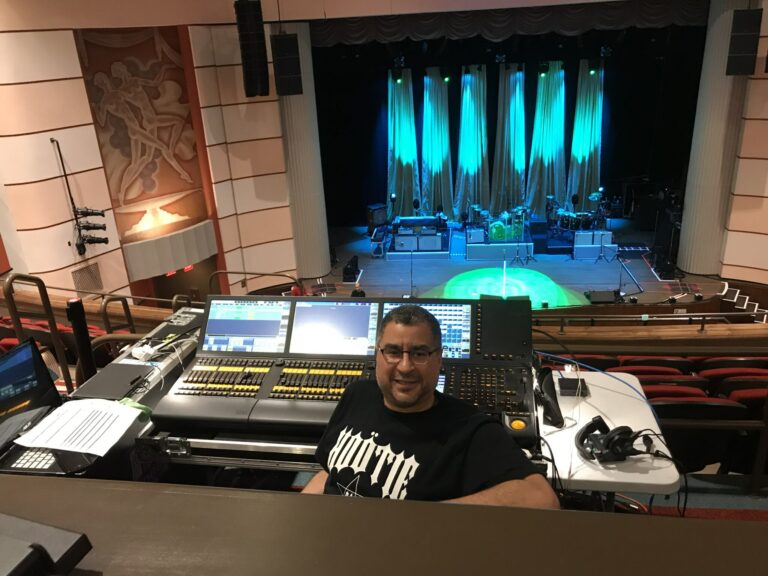
First, I was a roadie. As I progressed, I became a lighting technician, then a lighting engineer. I didn’t call myself a lighting designer until very late in my career.
I studied architecture. Back then I also understood that just because I could draft it didn’t yet make me an architect.
The same goes for the entertainment industry, or any industry for that matter. Before you give yourself a title, you should have the knowledge which gives you the right to claim that.
As for the world of LX, you can put a great show on stage.
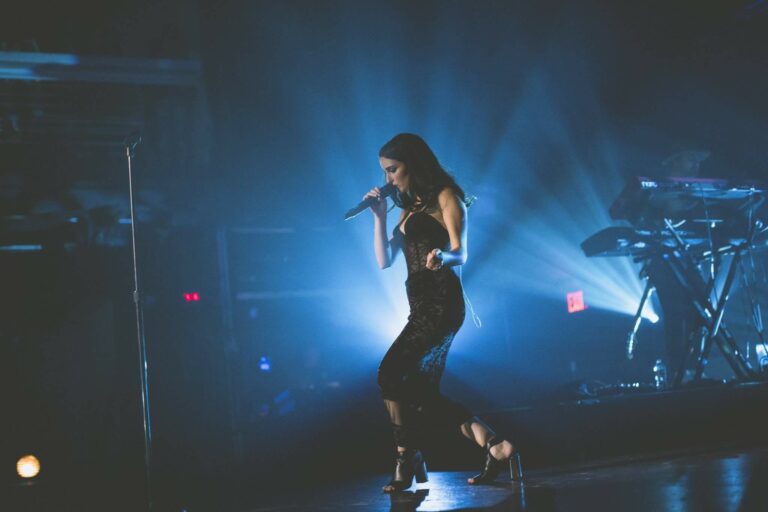
Through my job, I’ve been lucky enough to see a huge majority of this planet in ways other people will never see it.
It’s been difficult. I’ve missed birthdays and important family events. But my kids didn’t hold it against me. They understood what I did.
They said, “You’ve never not been here Dad. We always know you’re here.” I am immensely grateful for their love, support, and understanding.
I made sure we had a good family unit, a good life.
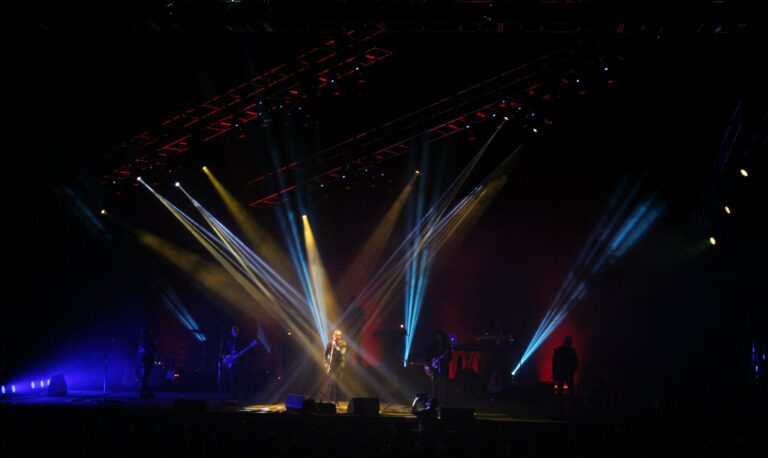
When my oldest was in elementary school, his teacher asked the kids in class, “What do your parents do?”
My son said, “My daddy plays with robots and rock stars.”
When the teacher asked him to elaborate, my son explained, “My daddy is the lighting designer for the Black Eyed Peas. He has moving lights that are like tiny, little robots and he gets to play with them all day.”
I don’t really like to talk with people about what I’m doing. As soon as they hear famous names, that’s all they can think about. But that’s not what it’s about. And I am not famous. Nor do I want to be. On the wheel of this entertainment world, I am just a cog. There is no need to brag about what I do.
I am a cog. I do realize my importance, but I also do realize nobody comes to the show because of me.
Ours is a very egotistical industry. To get a foot in the door and stay in the game you have to be this bragging, narcissistic person because it brings you to the forefront of people’s tongue.
However, I feel it is important to remain humble and honest, and to see things in perspective.
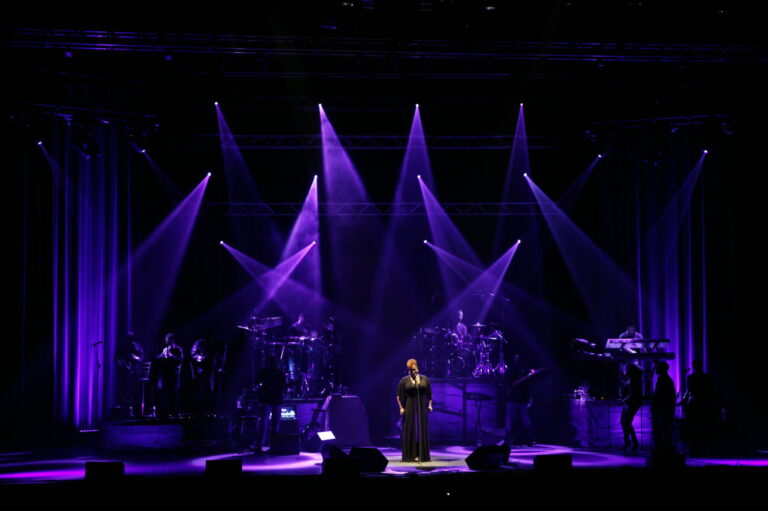
A little while back I met a guy, Grant Hill. He had recorded a couple albums worth of material. But he had no direction. He didn’t know what to do with what he had recorded. I helped him out, connected him with a distribution company, an accountant, a lawyer, etc.
He came back to me and said, “You did all the things for me a manager would do. Would you like to be my manager?”
I ended up saying “yes.” Lots of conversations we have are not so much manager – artist but rather client – therapist.
Erykah Badu used to say to her audience during a show, “I’ll play a brand-new song for you. I want you guys to listen to it. But be kind when you are listening.”
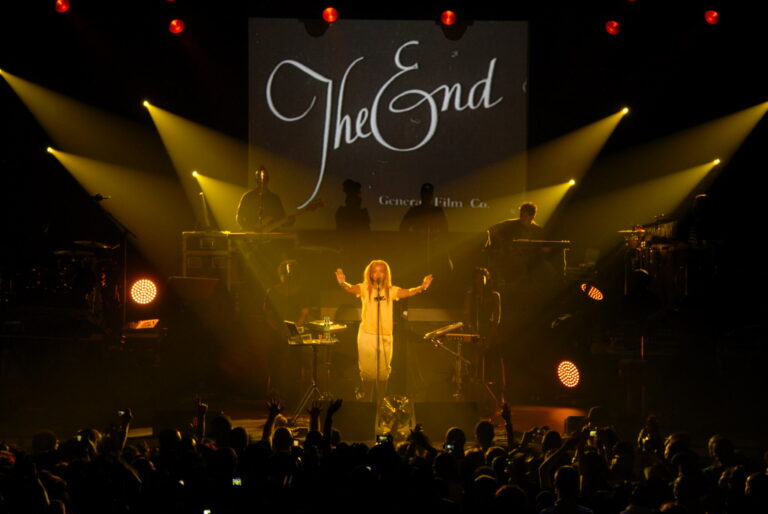
Grant knows he has talent, but he’s been spinning his wheels for a few years. His album comes out next week and he touches all the feels. The album is very emotional.
Being that he was able to create that kind of music naturally means he is an emotional, deeply feeling individual. Organizing the business side of his affairs, we don’t handle him with kid gloves though. But we are aware of who he is.
His day job is in a rebar and construction company in California. In a way, he almost reminds me of Bruce Springsteen, because of his work ethic. He is very hands on, wears blue jeans and shirts with the sleeves rolled up. But his personality is not that rough and tumble guy. When he meets new people in the business who have formerly only heard him, not seen him, they are very surprised. From his lyrics, they expect something else, yet he is this manly, rough looking guy.
Artists as a whole are very much unsure about their art. They put up a façade regularly to aid them in being confident.
I know a lot of guys who do that. They don’t feel particularly confident about what they are doing but the façade helps them to get through it all. Some of them get more work, get bigger shows because of the tough, confident image they are projecting.
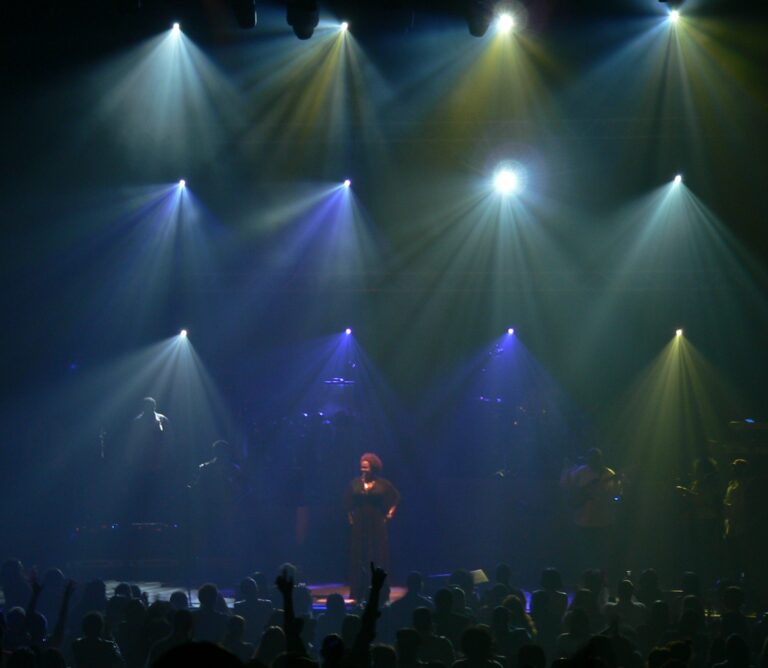
My preference has never been to work on the big extravaganzas.
I have done arenas and gigantic shows.
But I am never looking for that “fifty trucks of lighting” show. I can do it. I have no problem. But I don’t feel it is the job I need for my career.
Instead, we can go to a four-thousand theater in some place in Kansas. And people will walk out of the venue after, saying “This is one of the most phenomenal experiences, I have ever had.”
That’s what I want to give them. That’s what I want to create.
Todd Rundgren for example. One thing about him is he has a very rabid fan base. His fans fell in love with his music and it’s what they’ve been growing up with.
His shows have always had a huge amount of visual presentation. At one point, there was an eighteen-foot-tall pyramid on stage he would climb on during the show.
Often, his shows were quite theatrical with props just like on Broadway. To the point where the musicians would become set pieces.
After the show, people said the same thing to me over and over again. “I have loved this album since 1975. Yet, I have never seen it visually presented like this. It was the greatest experience.”
That meant a lot to me.
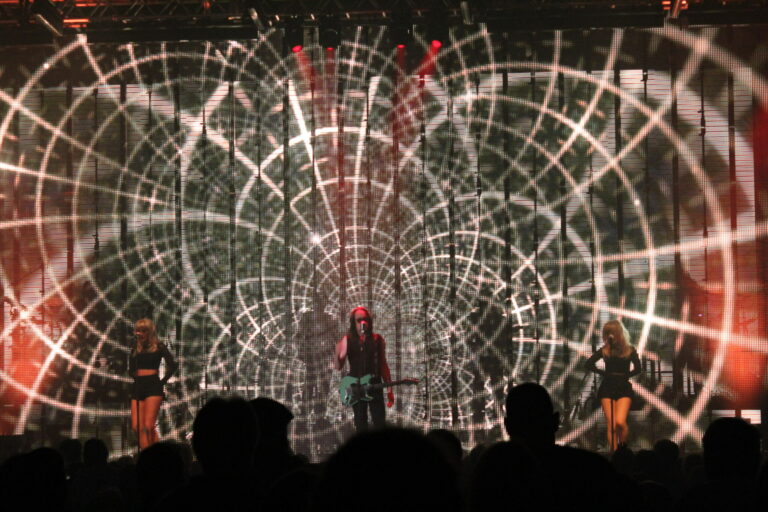
On the last night of this tour, Todd came to me with his road manager and poked his head in the door of my office. He said, “I’ve done shows for a long time and this was the most beautiful tour I’ve ever done.”
His road manager told me Todd never voices praise like that. It’s these moments of making a difference for the artists as well as the audience that I live and work for.
I want to take the artist’s musical view and transition it into a visual view.
Todd’s technique and style have always been quite avantgarde.
He is a great producer and engineer for dozens of huge acts as well. And he always puts together these fantastic visual experiences.
He likes video. One of his videos was the second or third video ever played on MTV.
On another tour we did a few years ago, we installed a big video wall behind the band, as well as put a translucent video wall in front of the band. I told Todd, “We will figure out a way to see the band when we want to see the band.”
What you got was this continuous look of depth with the band in between.
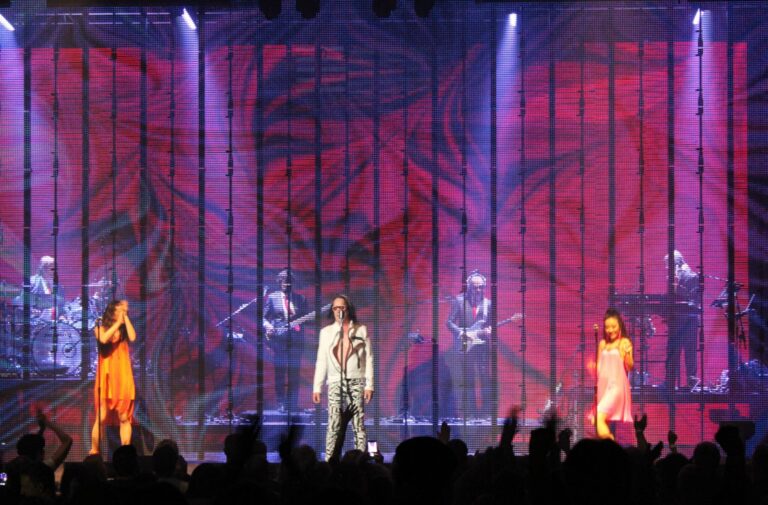
There were moments in time when people said, “I didn’t know what I was watching.”
For the most part, everyone was stunned and said, “This was absolutely phenomenal. I felt so immersed.”
“Cool,” I thought and smiled, “Mission accomplished.” It’s really about the artist and that the audience gets a great representation of the artist.
I can say I’ll do a great show for an artist like JLo, for example. But will I be as creative as I will be with someone like Alan Parson’s Project? Will I be able to be? I am not sure. I would really have to have a connection with the music to be able to do my best work.
If I can see it in my mind’s eye, then I can recreate it.
Visual presentation is key.
When George Michael did the Faith album for example. He did the video with all the fashion models. When he started in the business, he got made to be something. The industry created him. His brand image with the blue jeans and leather jacket. His image is in large part what drew people to him. What helped them to identify with him.
Of course, the quality of the music is important, but so is the image.
Unfortunately, not everyone who creates brilliant music will also become visible to the greater public.
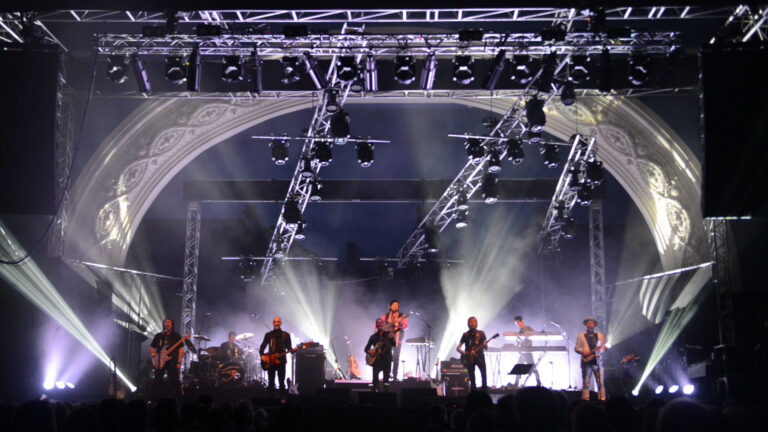
Nowadays it’s somewhat easier to get your work noticed. It’s easier to get produced. But because it is easier there are also more artists out there than ever before.
I always listen to as much as I can that is coming out. And, often I think, “These guys got something here. Let’s hope they’ll get beyond one thousand or five thousand fans.
I have to pay attention to so many different arenas. And I see all that music. That’s six hundred to seven hundred new music releases per week. Just try to get your head around the sheer volume of that.
What are we missing? What are we not getting to hear and see?
Martin Thomas’s Social Media handles:
Bernarr Ferebee, Audio Engineer – Black History Month, R. O. C. U.
Roadies Of Color United – End Of The Year Reflection


Liam Klenk was born in Central Europe and has since lived on four continents. Liam has always been engaged in creative pursuits, ranging from photography and graphic design, to writing short stories and poetry, to working in theatre and shows. In 2016, Liam published his first book and memoir, 'Paralian'.
Read Full Profile© 2021 TheatreArtLife. All rights reserved.

Thank you so much for reading, but you have now reached your free article limit for this month.
Our contributors are currently writing more articles for you to enjoy.
To keep reading, all you have to do is become a subscriber and then you can read unlimited articles anytime.
Your investment will help us continue to ignite connections across the globe in live entertainment and build this community for industry professionals.